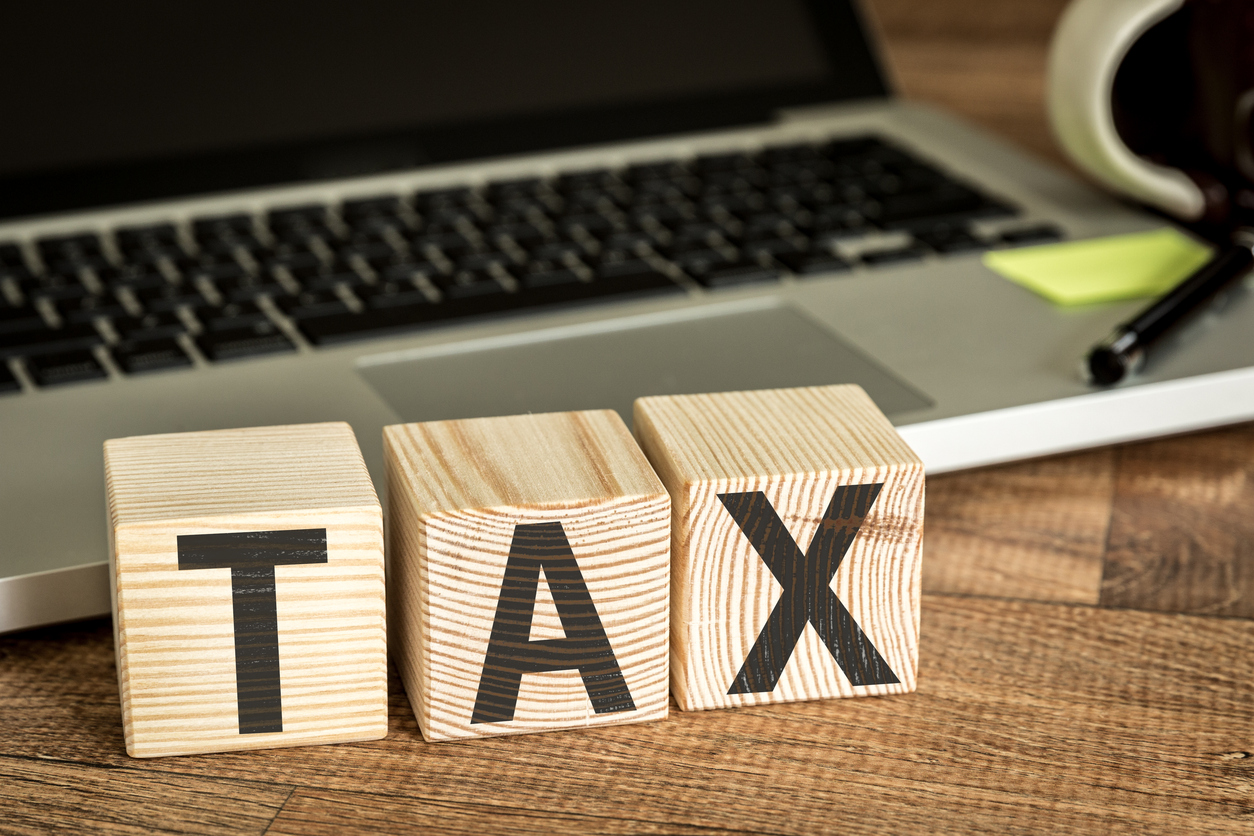November 2020
IRS adds language to tax return instructions to further clarify the cryptocurrency question.
The IRS issues new draft instructions to Form 1040 that say, “A transaction involving virtual currency does not include the holding of virtual currency in a wallet or account, or the transfer of virtual currency from one wallet or account you own or control to another that you own or control.”
October 2020
The IRS Is Increasing Audits of Nonresidents with US Rental Properties
Last week, the IRS announced that it will increase audits and scrutiny on nonresidents with US rental properties. This move is part of the IRS’s campaign, launched on October 5, 2020, to improve the timeliness and accuracy of returns filed by nonresidents (including G-4 visa holders) to report US rental income. Why is the IRS targeting nonresidents with US rental property? The IRS focuses its limited resources on areas where it is most likely to find errors and abuse. According to IRS data analysis and feedback from IRS employees, nonresident reporting of US rental income is a significant problem area. What is the IRS looking for? Although the IRS doesn’t give specific detail on what it is looking for, we have a pretty good idea. Many nonresidents (and some tax professionals) assume that nonresidents who own US rental property are taxed the same way as US citizens and residents who own rental property. In fact, there are several major differences. Below, we highlight some of the most common problems and errors we encounter with nonresidents who own US rental property. Common Mistakes Nonresidents Make in Reporting Their Rental Income Mistake 1: Assuming you don’t need to file a US tax return because your rental property had losses. If you received any income from your rental property, then you are required to file a US tax return (Form 1040NR) each year. If you failed to file a return, then the IRS can charge you a 30% tax on your gross income, without deductions. Plus, it can impose 25% “failure-to-file” penalties and interest for each year. Mistake 2: Claiming tax deductions for your depreciation and rental expenses without a “net election.” Did you know that nonresidents are taxed on their gross rental income? Rental income is considered FDAP (Fixed, Determinable, Annual or Period) income. And FDAP income is generally taxed at a 30% rate, without deductions of any kind. This means that even if you have losses on your rental property, you may still owe 30% tax on the income you received. Fortunately, you can make a special one-time “net election” to treat your rental income as “Effectively Connected Income to a US Trade or Business” (ECI). This allows you to claim deductions for your rental expenses. It also affects the tax rates that apply. Instead of a 30% flat rate on your gross rental income, you can use the graduated tax rates, which start at 10%, on your net rental income. Mistake 3: Filing only one tax return to report a US rental property owned jointly with your spouse. Nonresidents must file Form 1040NR each year to report their US taxable income. Form 1040NR cannot be filed jointly with a spouse. So, if two nonresident spouses jointly own a US rental property, then both spouses must file a Form 1040NR. If each spouse owns 50%, then each spouse will report half the total income and half the allowable deductions. The same is true if a nonresident is married to a US [...]
Spain proposes legislation to require reporting of global cryptocurrency transactions.
Spain’s Council of Ministers has proposed anti-fraud legislation that would require the reporting of cryptocurrency transactions both in Spain and abroad.
Nonresidents Face Delays Receiving Cash from the Sale of US Homes
If you are a G-4 visa holder or other nonresident, selling your home in the US this year has been tough. The housing market hasn’t been the problem. In fact, home sales have been booming in many areas. Instead, the problem has been getting your expected cash from the sale. For decades, nonresidents have been subject to significant tax withholding on the sale of their US homes. This means that if you are a nonresident, you only get 85% to 90% of your sales price at closing, less the amount necessary to cover your remaining mortgage and selling costs. The other 10-15% goes to the IRS as tax withholding. If you don’t actually owe much tax on the sale, you can apply for a tax refund the following year. Sure, you get your money back eventually, but the timing can be a problem if you were counting on the cash to purchase another home or to address an urgent need. If you don’t want to wait until the next year to get your cash back, you can apply to the IRS for a reduced rate of withholding. To do so, you mail an application to the IRS, and your funds are held in escrow until the application is approved. It was tough for nonresidents to get their cash before COVID-19. Then COVID-19 hit in the US. In 2020, when COVID-19 hit, it resulted in IRS shutdowns or reduced operations. As a result, the IRS has accumulated a massive backlog of unprocessed mail. Since the IRS wasn’t processing much of the mail it received, it also wasn’t processing nonresidents’ applications for reduced rates of tax withholding on the sale of their US homes. Those applications have been sitting in IRS mailrooms for months, waiting for processing, review, and approval. So, although many nonresidents concluded the sale of their homes months ago, 10-15% of their cash has been stuck in limbo in escrow accounts, awaiting the IRS’s review of their applications. In the remainder of this blog post, we: Explain the usual tax withholding process further, Discuss how COVID-19 has affected the process, Provide guidance for nonresidents considering selling a US property in 2020, and Outline some of the common challenges related to the withholding process. What is the normal tax withholding that applies to nonresidents selling homes in the US? The tax withholding on home sales is often referred to as “FIRPTA withholding.” That’s because it started in 1980, when the Foreign Investment in Real Property Tax Act (FIRPTA) was passed. The purpose of FIRPTA was to ensure that the IRS could collect tax from nonresidents (who typically lived outside the US) on US taxable income, such as on taxable gains from the sale of US property. By mandating tax withholding at the time of sale, the IRS created a cash reserve to cover the tax, in case the nonresident didn’t file a tax return the following year. FIRPTA withholding applies to non-US citizens who are “nonresidents” for US income tax [...]
What the Mail Backlog at the IRS Means for You
The IRS’s backlog of mail has reached historic proportions. Whereas under “normal conditions,” the IRS advises taxpayers that it generally takes 6 to 12 weeks to process any tax returns and correspondence mailed to the agency, 2020 has been far from normal. How big is the backlog of mail? In June 2020, the IRS had already generated a backlog of 11 to 14 million pieces of mail. Plus, it was continuing to receive an estimated 1 million items each week. And since the normal April 15 tax deadline had been extended to July 15 due to COVID-19, an increase in volume was expected over the coming weeks. Most IRS offices were still closed at the time or had voluntary work-from-home policies in place, so the backlog was continuing to grow. In mid- and late July, the IRS started reopening offices and mandating that employees come in. Certain offices had to temporarily close again, due to positive COVID-19 cases, including the Austin, TX, office, which serves most taxpayers with international interests. With offices now reopened, the IRS is working to address the backlog. However, the agency is also seeing additional volume in advance of October 15, the extended deadline for those who requested extensions on their 2019 tax returns. Is the backlog solely due to COVID-19? Before COVID-19, the IRS was already suffering from backlogs due to budget cuts, staffing shortages, and government shutdowns. COVID-19 merely compounded these challenges. Although some IRS essential functions remained operational when most of the US was shut down (between March and August 2020), many IRS mail rooms and offices ultimately closed or shifted to work-from-home. Since closures extended for months, COVID-19 greatly exacerbated the significant backlog at the IRS. What kinds of things are affected by the IRS mail backlog? 2019 tax returns mailed to the IRS—US taxpayers who were unable to e-file their returns (either because their returns were ineligible for e-filing or because they didn’t have access) mailed their 2019 tax returns to a variety of IRS offices during 2020. The appropriate office depended on where the taxpayer lived, whether the return showed a refund or a balance due, and the type of return and forms being filed. Some offices have been more affected by the backlogs than others. Tax returns mailed between March 2020 and now (early October 2020) have been subject to significant delays in processing. Payments mailed to the IRS—Many taxpayers who e-filed their returns still mailed in checks or other payments to the IRS. They also sent checks to the IRS for other purposes, such as 2020 estimated tax payments, balances due on prior-year returns, or interest and penalties on tax notices. While the IRS usually processes payments quickly, payments sent since March 2020 have seen delays in processing. Amended tax returns for prior years—Until recently, amended returns had to be paper filed, by mail. Only in August 2020 did the IRS enable e-filing of amended returns, and then only for 2019 amended returns. Previously, the IRS warned taxpayers [...]
September 2020
IRS proposes to increase visibility of the cryptocurrency question on individual tax returns.
The IRS proposes moving the cryptocurrency question from Schedule 1 to page 1 of Form 1040. Practitioners indicate that the question is still confusing to taxpayers.
The Impact of RBG’s Death on Your Past Tax Returns
US Supreme Court Justice Ruth Bader Ginsburg passed away on Friday, September 18, 2020. Ginsburg’s passing has ramifications upon multiple fronts based on both her iconic presence and long-term judicial standing. With Ginsberg’s death, one of the many issues now in question is the future of the Affordable Care Act (ACA). While Ginsberg was alive, efforts to strike down the ACA were defeated due to the alignment of the four liberal justices (including Ginsburg) along with Chief Justice John Roberts. Now, the Court is set to review another case that has the potential to invalidate the ACA. What does the ACA have to do with individual tax returns? The main funding mechanism of the ACA is the Net Investment Income Tax (NIIT), a surtax that was passed as part of the ACA legislation. The NIIT levies an additional 3.8% tax on certain investment income, such as interest, dividends, capital gains, and rental income. In addition, the ACA included a 0.9% Medicare surtax. These taxes apply to certain high earners (those whose incomes exceed $250,000 for married filing jointly, $125,000 for married filing separately, or $200,000 for single filers). Since 2013, taxpayers with incomes above the specified thresholds have been required to calculate and pay the NIIT and Medicare surtax as part of their Form 1040 tax returns each year. Now, Ginsberg’s passing creates another wrinkle in the long-term viability of these taxes. If the ACA is invalidated, then taxpayers may seek refunds of past taxes paid. If the US Supreme Court finds the ACA unconstitutional, the ACA may be repealed in its entirety, resulting in the repeal of the NIIT and additional Medicare surtax. If the taxes are repealed, then taxpayers who have paid these taxes on prior returns may voluntarily seek refunds of some or all of the prior NIIT and Medicare surtax paid. To do so, taxpayers would generally need to file amended tax returns for tax years still within the statute of limitations period for refunds (tax years 2017, 2018, and 2019, for most taxpayers). Alternatively, the IRS may offer a special path to requesting the refund of these taxes, such as a new form that is submitted with the 2020 tax return. When will we know? The latest effort to strike down the ACA is the case of Texas v. United States 945 F. 3d 355 (5th Cir. 2019). This case is set to be heard by the US Supreme Court in November 2020, one week after US Election Day. Without Ginsburg, there are now eight remaining justices on the Supreme Court and four potential “likely” outcomes to how this case may play out: The Court could deadlock at 4-4, which in turn would mean the Affordable Care Act would survive. This would be the likeliest outcome if the case is heard in November. The Court could decide the case in favor of keeping the Affordable Care Act, 5-3. This is highly unlikely given the current composition of the justices without Ginsburg. The Court could decide [...]
US Senators question IRS’s collection of cryptocurrency data as unlawful surveillance.
Senate Finance Committee ranking member Ron Wyden, D-Ore., and Sen. Elizabeth Warren, D-Mass., ask about IRS-CI’s subscription to a database provided by Venntel, Inc. Many cryptocurrencies, including the current market leader, Bitcoin, allow a form of identity masking but rely on blockchains as public ledgers that verify transactions and generate trust. IRS-CI has subscribed to a cryptocurrency tracing tool offered by Chainalysis, Inc. since 2017.
Audit finds that IRS is hindered by not receiving more 3rd party reporting data from exchanges.
In its audit of IRS treatment of virtual currency transactions, the US Treasury Inspector General for Tax Administration (TIGTA) found that it is difficult for the IRS to identify taxpayers with virtual currency transactions because of the lack of third-party information reporting that specifically identifies virtual currency transactions. TIGTA recommended that the IRS continue efforts to close the virtual currency information gap by issuing guidance clarifying the proper information reporting associated with virtual currency transactions. TIGTA also recommended that the IRS develop a process to use and monitor Title 31 virtual currency information in Title 26 examination workload.
Zug allows payment of tax with cryptocurrency.
The Swiss canton of Zug approves paying tax liabilities of up to CHF 100,000 (around $110,000) in cryptocurrencies. The Finance Directorate’s Office calls Zug the home of “Crypto Valley.”
August 2020
IRS legal memo addresses tax treatment of cryptocurrency from crowdsourcing.
The IRS issues a legal memo on taxation of virtual currency received in the crowdsourcing labor market. The IRS concludes that a taxpayer who receives convertible virtual currency in exchange for performing a microtask through a crowdsourcing platform has received consideration in exchange for performing a service, and the currency is taxable as ordinary income.
New IRS Guidance Allows Owners of Foreign Trusts and Retirement Accounts to Get Past Penalties Refunded
On March 2, 2020, the IRS passed new guidance making tax filings easier for certain US taxpayers with foreign pensions, retirement accounts, and savings trusts outside the US (see Rev. Proc. 2020-17). Specifically, it created two new “safe harbors.” Taxpayers whose retirement or other accounts meet the safe harbor requirements can: • Obtain more favorable US tax treatments for their foreign retirement and savings trust accounts, • Skip certain time-consuming annual informational filings, and • Seek forgiveness of past penalties. Previously, in Part 1 of our three-part series, we explained why this new development was such a big deal for US taxpayers who have foreign pensions and retirement accounts. We explained why US tax law is so problematic for owners of foreign retirement accounts. We also explained how the new safe harbor can reduce taxpayers’ annual tax and reporting requirements, saving them time and money. Then, in Part 2 of our series, we covered the eligibility requirements for taxpayers to claim the new Section 5.03 safe harbor, which applies to pensions and retirement accounts held outside the US. Now, in this, Part 3 of our series, we explore the penalty relief that the IRS is now offering to taxpayers who haven’t appropriately filed certain forms to report their foreign retirement accounts. Part 3 – Refund of penalties related to Forms 3520 and 3520-A As explained in Parts 1 and 2 of our series: Most foreign pensions and retirement accounts will be considered foreign trusts under US tax law. Generally, owners of foreign trusts must file Forms 3520 and 3520-A each year to report their ownership in a foreign trust, as well as related tax, income, and informational items. The penalties for late-filing or non-filing of Forms 3520 and 3520-A are significant. They start at $10,000 per form per year for small accounts and can rise much higher depending on various factors. If you meet the eligibility requirements to claim the safe harbors, you will not be required to file IRS forms 3520 and 3520-A. These developments are great news for owners of certain foreign pensions, trusts, and retirement accounts. But what if you already paid large penalties for problems filing Forms 3520 and 3520-A in the past? Can you get those penalties back? The short answer is yes, if certain requirements are met. Per the new guidance issued in March (Rev. Proc. 2020-17), if you can show that your foreign pension or retirement plan meets the Section 5.03 safe harbor or your foreign savings plan meets the Section 5.04 safe harbor, then you can qualify for penalty relief. (See Part 2 for eligibility requirements for the safe harbors.) The penalty relief only applies to penalties assessed under IRC Section 6677. (This is the Tax Code section that applies to foreign pensions, retirement plans, and saving plans that are considered foreign grantor trusts under US tax law and must be reported annually on IRS Forms 3520 and 3520-A.) Fortunately, this relief is available even when failure to file the forms was [...]
Do Your Foreign Retirement Accounts Qualify for Better US Tax Treatment?
On March 2, 2020, the IRS announced two new “safe harbors” for certain US citizens, green card holders, and other US tax residents who own foreign pensions, retirement accounts, and savings trusts (see Rev. Proc. 2020-17). It also offered relief from certain penalties for US taxpayers who hadn’t completed past filings of specific forms (namely, Forms 3520 and 3520-A). These measures were then published and went into effect on March 16, 2020. Taxpayers whose pensions or retirement accounts meet the safe harbor requirements can obtain more favorable US tax treatments for their foreign retirement accounts. They can also skip certain time-consuming annual informational filings and seek forgiveness of past penalties. In Part 1 of our three-part series, we explained why this new development was such a big deal for US taxpayers who have foreign pensions and retirement accounts. We explained why US tax law is so problematic for owners of foreign retirement accounts. We also explained how the new safe harbor can reduce taxpayers’ annual tax and reporting requirements, saving them time and money. In this, Part 2 of our series, we cover the eligibility requirements for Section 5.03, the safe harbor that applies to pension and retirement accounts held outside the US. Then later, in Part 3, we explore the penalty relief that the IRS is now offering to taxpayers who haven’t appropriately filed certain forms to report their foreign retirement accounts. Does this article apply to you? Before we dive in further to your foreign retirement accounts and whether they qualify for the safe harbors, let’s first take a look at whether Rev. Proc. 2020-17 and the safe harbors apply to you at all. In general, Rev. Proc. 2020-17 and this article apply to US tax residents who have pension or retirement accounts outside the US. Who is affected by this new guidance: US citizens and green card holders, no matter where they live in the world US tax residents (those on resident visas or who meet the Substantial Presence Test of US residency) US nonresidents (including G-4 visa holders) who file a 6013(g) election to file jointly with their US citizen or resident spouse If this is you AND you have foreign retirement accounts or pensions, we encourage you to read on. This series is meant for you. Who is not affected by this new guidance: US tax nonresidents who file Form 1040NR US exempt individuals (e.g., diplomats on A visas and international organization individuals on G-4 visas who file Form 1040NR) Any individuals who only have US pensions and retirement accounts Any individuals who only have international organization pensions (from The World Bank, IMF, and IDB) or Canadian RRSPs If you fit into any of the above categories, you can skip the rest of this three-part series (unless, of course, you have a serious interest in US tax law). Part 2 – Do your foreign retirement accounts qualify for the new safe harbors under Rev. Proc. 2020-17? Rev. Proc. 2020-17 introduced two “safe harbors”: Safe harbor [...]
IRS Gives Big Break to US Taxpayers with Pensions and Retirement Accounts Outside the US
If you own the foreign equivalent of a 401(k) plan or an IRA, then you might reasonably assume that, under US tax law, the IRS would treat your foreign account the same way it treats US 401(k)s and IRAs. You might assume that your contributions to these accounts would be tax-deductible, your earnings would grow tax-free, and you would only owe tax at the time you start taking retirement distributions from the account. The only problem with these assumptions? You would be absolutely wrong. Although the IRS grants tax-favored status to certain US retirement plans and savings accounts, it generally treats their foreign equivalents quite differently. That’s true even if the foreign retirement account receives special tax treatment in the other country. (There are a few exceptions, such as Canadian RRSPs, but those exceptions are extremely rare.) In fact, the IRS has a long history of treating foreign assets more severely. Of stripping them of their tax-preferred treatments. Of requiring ever more extensive and burdensome information reporting each year. Of imposing harsh penalties for failure to file timely, accurate forms to report them. (To be fair, there are good reasons for this.) Still, the burden on “ordinary” taxpayers with pension and retirement accounts outside the US has been disproportionate. In an unusual move, the IRS took steps earlier this year to make things easier for certain US taxpayers with retirement accounts and savings trusts outside the US. On March 2, 2020, the IRS announced two new “safe harbors” for certain US citizens, green card holders, and other US tax residents who own foreign pensions, retirement accounts, and savings trusts (see Rev. Proc. 2020-17). It also offered relief from certain penalties for US taxpayers who hadn’t completed past filings of specific forms (namely, Forms 3520 and 3520-A). These measures were then published and went into effect on March 16, 2020. It should be noted that the IRS has made a habit of issuing guidance via FAQs versus publishing guidance in the Internal Revenue Bulletin (IRB). The IRB is the authoritative instrument for announcing official rulings and procedures of the IRS. If guidance is not published in the IRB, then it carries no weight if challenged in tax court (or any other legal proceeding). An example of unpublished guidance is the Frequently Asked Questions (FAQs) for Cryptocurrency. They have never been published in the IRB and are therefore persuasive versus actual guidance that a taxpayer can rely upon. The Rev. Proc. 2020-17 was published in the IRB and therefore can be relied upon. In particular, the first safe harbor offers a big benefit for US taxpayers with foreign pension and retirement accounts. Taxpayers whose pensions or retirement accounts meet the safe harbor requirements can obtain more favorable US tax treatments for their foreign pensions and accounts. They can also skip certain time-consuming annual informational filings and seek forgiveness of past penalties. Do the safe harbors and relief under Rev. Proc. 2020-17 apply to you? If you are already a client of The [...]
July 2020
IRS creates team to focus on virtual currency fraud.
The IRS announces an “Emerging Threat Mitigation Team” with a narrow focus to look for financial crime and fraud involving virtual currency.
US estate practitioners assign $0 value to cryptocurrency assets when private key is lost.
Estate planners report that they will not report the value of cryptocurrency on IRS Form 706 if the private key goes missing prior to death because the value of the asset would be $0.
US taxpayer challenges IRS’s right to obtain account data from cryptocurrency exchange.
A taxpayer sues the IRS claiming that it illegally seized his account information from three cryptocurrency exchanges. The taxpayer was one of the 10,000 taxpayers to receive a compliance letter from the IRS on cryptocurrency.
June 2020
COVID-19 delays issuance of IRS guidance on cryptocurrency reporting.
The IRS reports that due to COVID-19, it is behind on the timeline it set to have guidance issued for IRC 6045 information reporting on virtual currency.
US court rules that cryptocurrency must be used to pay immediate tax debt.
A couple hoping to pay off their tax debt with a 6-year installment agreement cannot ignore the IRS’s insistence that they instead pay immediately with their $7 million in cryptocurrency.
May 2020
Will Passengers Stranded on Cruise Ships Due to COVID-19 Become US Tax Residents?
As of May 2, 2020, over 40 cruise ships were dealing with positive cases of the COVID-19. The New York Times published an article on April 14, 2020, pointing out that over 80,000 crew members were stranded on 100 cruise ships. There is great uncertainty of when they may disembark. And then how to deal with the day-to-day reality of COVID-19. But from a tax perspective, the big issue that comes into play for non-US residents who are either crew members or passengers is the Substantial Presence Test for US tax residency purposes. It raises the question: Will crew and passengers stranded on cruise ships due to COVID-19 become US tax residents if their ships are currently locked down in US territorial waters? If US nonresidents spend enough time in the US, they can trigger the US Substantial Presence Test of residency. Nonresidents who meet the requirements of the Substantial Presence Test are considered US tax residents. As such, they become taxable in the US on their worldwide income (even if another country also taxes that income) and subject to US informational reporting requirements for foreign assets. The US Substantial Presence Test looks at days of presence over a three-year period. To meet the Substantial Presence Test, an individual must be physically present inside the US for: At least 31 days during the current year, and At least 183 days during the 3-year period that includes the current year and the two years immediately before that, counted as follows: All the days you were present in the current year, and 1/3 of the days you were present in the first year before the current year, and 1/6 of the days you were present in the second year before the current year. But what does it mean to be physically present “inside the United States”? The term includes the following areas (among others): All 50 states and the District of Columbia, The territorial waters of the US, and The seabed and subsoil of those submarine areas that are adjacent to US territorial waters and over which the United States has exclusive rights under international law to explore and exploit natural resources. Based on this definition, all nonresident alien crew members and passengers could start incurring US days of presence (under the Substantial Presence Test) from the moment they entered the territorial waters of the United States. The following cruise ships are docked in the United States: Grand Princess – 2,422 passengers and 1,111 crew Costa Magica – 2,309 passengers and 945 crew Carnival Valor – Unknown Norwegian Breakaway – Unknown Carnival Freedom – Unknown Celebrity Infinity – Unknown Costa Favolosa – 1,009 crew Zaandam – 1,243 passengers and 586 crew Oasis of the Seas – Unknown Liberty of the Seas – 1,250 crew Coral Princess – 1,020 passengers and 878 crew Disney Wonder – Unknown Pride of America – 500 crew Symphony of the Seas – Unknown Celebrity Eclipse – Unknown Fortunately for the crew members, the US excludes explicitly days [...]
CARES Act Expands Corporations’ Ability to Obtain Additional Refunds
Corporations with net operating losses in 2018, 2019, or 2020 could be eligible for significant tax refunds under the new rules of the CARES Act. Previously, the Tax Cuts and Jobs Act, passed in December 2017, limited the ability of corporations to use their net operating losses (NOLs) in two ways, starting with tax year 2018 losses: It precluded them from carrying the current year’s losses back to prior years. It limited the amount of losses that could be used in any one future year to only 80% of the amount of the loss. The Act did allow losses to be carried forward indefinitely. For taxpayers with losses originating prior to 2018, the rules remained the same. Losses could be carried back two years and carried forward 20 years. CARES Act Expands Corporations’ Ability to Use NOLs and Obtain Additional Refunds To bring much-needed relief from the damage of COVID-19, Congress passed The Coronavirus Aid, Relief, and Economic Security Act (CARES Act), which was signed in to law on March 27, 2020. Lawmakers assumed that taxpayers who are dealing with lower revenues, business interruptions, and excess expenses because of Covid-19 might find themselves with overall losses in 2020. As such, the following relief is now available: 1. The CARES Act allows NOLs from 2020, as well as those from 2018 and 2019, to be carried back five years from their origination. This will create tax refunds for many corporate taxpayers. 2. The IRS is expediting these refunds for taxpayers by allowing the refund claims to be processed via fax instead of only by mail, and it does not require taxpayers to amend the entire prior year returns to obtain the refunds. How does this affect companies that paid the Repatriation Tax in 2017? Back in 2017, the TCJA had created a one-time Repatriation Tax (also known as the “Transition Tax” or IRC §965 tax) that applied to many US corporations that owned interests in foreign corporations. These corporations were required to calculate their repatriation income, subject to the Repatriation Tax, on their 2017 tax returns (for calendar year filers) or 2018 returns (for certain fiscal year filers). Now, under the CARES Act, NOLs may be carried back five years, to 2013, to offset this repatriation income. However, taxpayers may elect NOT to apply their NOLs to particular tax years and may exclude the tax year in which they were subject to the Repatriation Tax. This brings up an interesting question. Which tax years are most advantageous to apply NOLs? Remember that for tax periods through December 31, 2017, the corporate tax rate was typically 35% but could be as high as 39%. For tax periods from January 1, 2018, onward, the corporate tax rate was reduced to 21%. Further, remember that the Repatriation Tax allowed taxpayers a special tax rate of 15.5% on earnings attributable to non-cash equivalents and 8% on earnings attributable to cash equivalents. To maximize refunds, taxpayers may wish not to apply their NOLs to the repatriation [...]
Tax Relief for US Expats Temporarily Stranded Back in the US Due to COVID-19
When COVID-19 hit, it posed an additional challenge for US expats who were temporarily in the US for business or personal reasons. Many became stranded in the US due to restrictions on international travel, borders closing, or local COVID-19 conditions. This left them scrambling to work out longer-term accommodations in the US, support and logistics for family members back at home, and more. Although the last thing these expats needed to worry about was taxes, being stranded in the US also threatened to disqualify them from being able to claim the Foreign Earned Income Exclusion on their US 2020 tax returns. The Foreign Earned Income Exclusion (FEIE) and associated Foreign Earned Housing Exclusion are important tax breaks for US citizens and residents living overseas. They are one mechanism to combat the double taxation that happens when their income is taxed by both the US and the country in which they live. They also help offset costs and compensate for the fact that many expats are not using US taxpayer-funded services while abroad. The exclusions allow them to shield up more than $100,000 per year of employment income or other “earned” income from US taxes. US expats can qualify for the FEIE in two ways: The Bona Fide Residence (BFR) test, which takes into account various facts and circumstances, and The Physical Presence Test (PPT), which takes into account the number of days an expat spends abroad vs. in the US (among other factors). The PPT is often referred to as the 330-day rule (for the number of days an expat needs to stay outside the US in 12 months to qualify). Many expats know one PPT rule by heart: do not spend more than 35 days in the US (for any reason) during a 365-day period. COVID-19 threatened that. By being stranded temporarily back in the US due to COVID-19, expats risked exceeding the 35 days and losing their ability to claim the Foreign Earned Income Exclusion under the PPT. Fortunately, the US Internal Revenue Service (IRS) recently issued Revenue Procedure 2020-27 to grant tax relief to US expats in this situation. The relief applies to US tax residents who have established residency in a foreign jurisdiction, have departed their foreign jurisdiction, and are unable to return to their foreign jurisdiction due to COVID-19. This new procedure allows eligible expats to waive the time obligations (i.e., the limit of 35 days in the US) of Internal Revenue Code Section 911, the tax code section for the Foreign Earned Income Exclusion. To meet this exception, an expat: Must have established residency or been physically present in the foreign jurisdiction before the beginning date in the “qualifying period” (defined below), and Must have reasonably expected to be present in the foreign jurisdiction for 330 days within any 12 months but for the COVID-19 emergency. The “qualifying period” is as follows: The People’s Republic of China – Beginning on December 1, 2019 Rest of the world – Beginning on February 1, 2020 Period [...]












